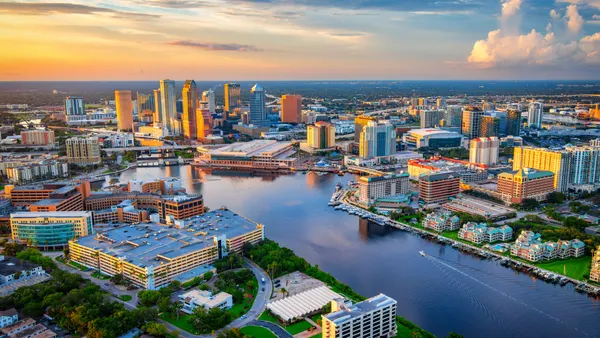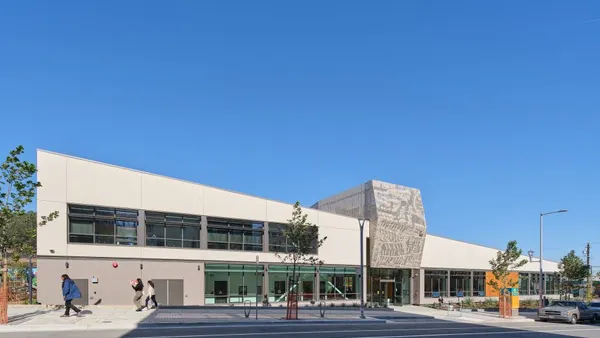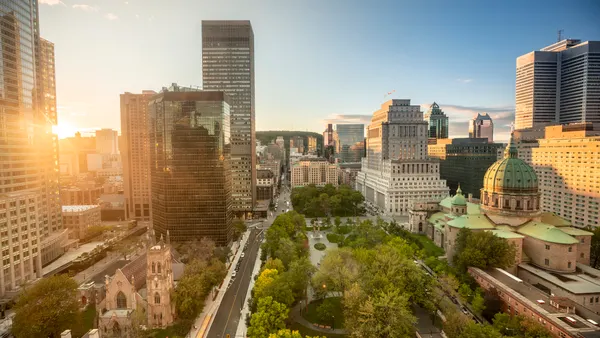Dive Brief:
- Homebuilder PulteGroup has unveiled its "invisible house," a net-zero energy home prototype located in a company development in the San Francisco Bay Area city of Brentwood, CA.
- The house's power source, which must match or exceed its energy usage to be considered net-zero, is onsite solar. PulteGroup said it built the home with "airtight building methods," which means a tight building envelope seal and a higher-than-average amount of insulation.
- To further reduce the prototype's energy consumption, PulteGroup has also utilized an energy efficient HVAC system and home lighting components.
Dive Insight:
PulteGroup — ranked by Builder Magazine as the third-largest homebuilder in the U.S. and one of four homebuilders on the Fortune 500 — said it will monitor the home's energy usage, savings and "impact on the energy grid" for the next 12 months in order to gauge performance and to determine any future changes to the concept.
The push for net-zero buildings, or other similar energy-efficient designations, has been largely reserved for commercial buildings in recent years. Perhaps the most high profile of those endeavors is the Tesla gigafactory, set to hold its grand opening at the end of next month. Tesla announced in November that its $5 billion electric car and home energy storage battery manufacturing facility in Reno, NV, would be net-zero and carbon neutral and said it had designed the building — particularly the rooftop — for a significant solar component.
As far as net-zero and other energy efficiencies in residential applications, a recent National Association of Home Builders survey suggested that homeowners' cost-consciousness might exceed their desire for more expensive green home features. The survey found that approximately 50% of homebuyers were willing to invest in energy efficiency systems but demanded a 20% rate of return.
However, a 2015 Dodge Data & Analytics report found that around 69% of builders and 78% of remodelers said they believed customers would pay more for green building features. Dodge's study also found that builders expect an increasing amount of "green work" in the future, with more than 50% of respondents expecting their workload to consist of 60% such projects by 2020.










